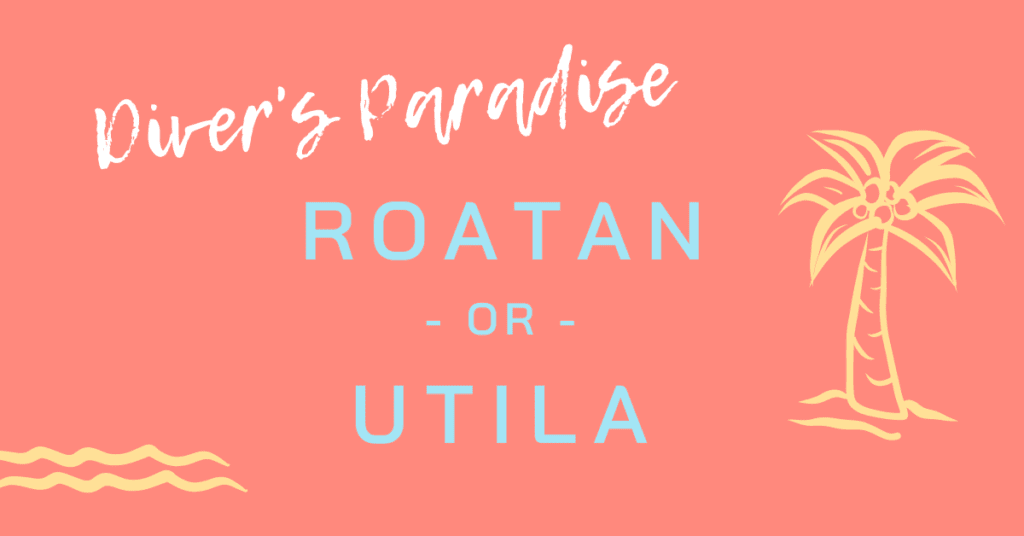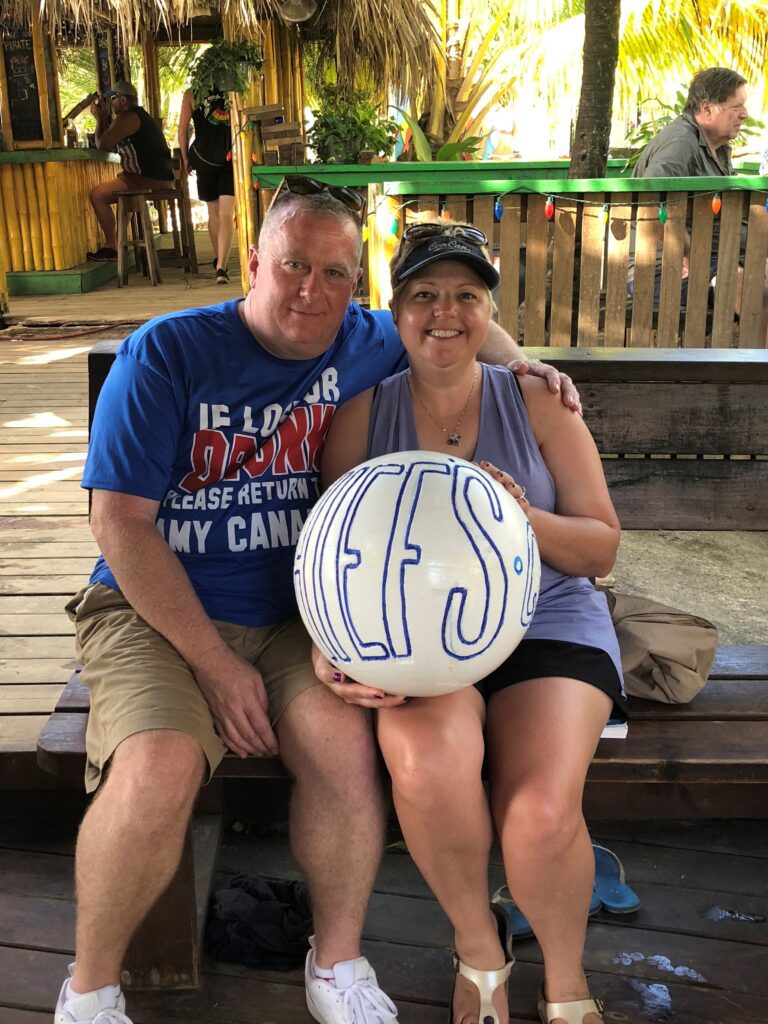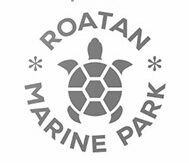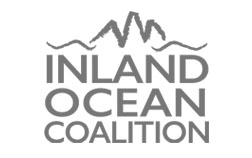By Author
Halloween Event & Contest
Spooktacular Dive Trip
When: Sunday, October 30 | 8:00 AM to Noon
Where: Sun Divers – Half Moon Bay in West End, Roatan (near Sundowners Beach Bar)
Cost: Two-tank dive price + $10 costume contest entry free
RSVP via Whatsapp +504-9585-2113 or Email
About the Event
It’s true that it never feels quite like fall in the Caribbean. Palm tree fronds don’t change color. Pina coladas are more the rage than pumpkin spice lattes. But that doesn’t mean we can’t enjoy the festivities. Especially if it means mixing in a little creativity and fun with our most favorite thing here at Sun Divers: diving with you all, of course!
Join Sun Diver’s 2nd Annual Spooktacular Dive Trip and Underwater Costume Contest.
Yes, you read that right: UNDERWATER costume contest.
Sun Divers is getting spooky!
First and foremost, this is really just an excuse to get the coolest dive tribe around together for some frighteningly good fun – including those that won’t be on the island (more on that in a minute). We’ll run our two-tank morning trip per usual, but with a few twists:
These dives will be a little on the ‘spooky’ side ?
We’ll do a beachside surface interval that will include some pumpkin spiced up snacks.
And what would Halloween diving be without an underwater costume contest?
Underwater Costume Contest, you say?
That’s right boys and ghouls. We want you to get creative with those underwater outfits. In fact, you can go all-out-Darth Vader if you want. Or how about an underwater unicorn? Wear whatever floats your boat….as long as it is safe for scuba and for the ocean.
A few tips to make sure safety’s first:
- Choose a costume that will not obstruct or get caught on your gear, nor affect your dive skills. Non-scuba masks can be worn on the boat and for photo opps, but not on the actual dives.
- Leave no trace and keep it reef friendly. Avoid anything that will wash off or fall off while diving.
- Keep it family friendly. Hopefully we don’t have to explain this one!
How to Win
- Photos of contestants will be posted on the Sun Divers Facebook Page. Entrants must like the Sun Diver’s facebook page to allow for tagging.
- Sun Diver Facebook fans near and far will have 24hrs to vote by liking the pics of their favorite costumes
- 1st and 2nd place winners, based upon # of likes, will be announced via Facebook on Halloween Day, Monday, October 31
What You’ll Win
- First place – $100 Gift Card to ScubaPro
- Second place — Sun Divers swag
Are you in? Reserve your spot today!
For questions about the event, you can contact us at [email protected]
2021 Spooktacular Dive Trip
4 Great Reasons to Become a RMP Coral Ambassador
Are you interested in adding conservation to the list of awesome things you do while traveling to Roatan? Volunteering in our coral nurseries is a great way to leave our beautiful reef in a healthier place then you found it. Sun Divers friend & customer Alex Johnson shares the four reasons he loved becoming a Coral Ambassador.
Guest blog by Alex Johnson, friend of Sun Divers
Up until now, my only exposure to the threats coral reefs face has been second-hand. Growing up in Florida, where only a minute fraction of our reefs remain, changing the status quo felt unattainable; I didn’t know what I could do to make a difference. In July of 2021, I became PADI Certified in Roatan through Sun Divers. I felt I had a new lens into this beautiful part of our world. It wasn’t until later, when I dove in less well-preserved reefs, that I realized just how extraordinary Roatan’s reefs are. The best contrast in my mind was the booming metropolis of New York City against my small coastal hometown. I had to go back to Roatan. Returning just recently this summer made me wonder: how can one reef be so perfectly preserved, yet another so barren? How can someone like me make a difference in this part of the world that I want to forever enjoy? These questions brought me to becoming a Roatan Marine Park (RMP) Coral Ambassador, and here’s four great reasons for you to become one too:
1. Learn something new
Have you ever wondered what corals are made of, how they survive, and what they eat? I’ll give you a sneak peek: corals are actually made up of thousands of soft-bodied animals known as polyps – and that’s just scratching the calcium carbonate surface!
When I walked up to the dive shop on my first day of the course, I was greeted by the same casual, yet eager and adventurous vibes I’d grown to love. With the instructors’ enthusiasm at the ready, you’ll have a wonderfully encouraging learning environment – making the course just that much easier!
The first step on your way to becoming a Coral Reef Ambassador is understanding the science behind the process. You’ll learn about the Roatan Marine Park, and then everything you need to know about coral stressors, reproduction, survivability, and restoration. Then, you’ll explore which corals are the best for restoration.
But the fun doesn’t stop there! Once you’ve covered the more technical bits, you move on to simulating the underwater restoration process. This ambassadorship is fully hands-on, after all! With tools at the ready, you’ll practice the techniques required to clean and maintain the coral nurseries, as well as how to outplant fragments to grow a new colony. After learning these new skills, you’ll be ready to venture out to the coral nurseries and help with the real deal coral restoration in Roatan!
2. Help save our coral reefs
If there’s one thing I’ve learned recently, it’s that awareness is key. Before you even consider the benefits of coral nurseries and outplanting, know that what you will learn by becoming an RMP Coral Ambassador can have an enormous impact. Take sunscreen for example. The majority of lotions that people bring into the water are toxic for our planet’s reefs. Learning why this is the case and being able to educate others is powerful! Once you understand the stressors affecting our reefs, not only can you be an ambassador in the water, but in your communities as well!
That isn’t to say that the work in the water isn’t important, though! Coral nurseries are wonderfully effective tools which we can use to rehabilitate our reefs. They’re safe from predators, inexpensive, easy to maintain, and have access to massive amounts of sunlight – meaning the coral can grow very quickly! Once you become an RMP Coral Ambassador, you’ll be a part of the growing force to bring our reefs back to life!
3. Outplant your own coral colony
One of the most exciting parts of the course is the final stage, outplanting. This is when all of your hard work culminates. Taking branches cut from one of the nurseries you visited in a previous dive, you’re going to find a home for your very own coral colony! Even having prepared for this on land, the experience was incredibly novel for me. The best way I could describe it is an underwater construction project. For me, this was exhilarating as I knew if I did it right, one day this colony would be able to flourish, and I would have my own small piece in our beautiful ocean. What a special experience!
4. Improve your dive skills
In the wonder of it all, I was taken by surprise with how much my diving improved over this course. Never before when diving had I needed to focus with such precision. From working on the nursery trees to creating the best home for my newly adopted coral family, it was a welcomed challenge! I especially found it difficult at first to maintain my trim while steadily chiseling away at the rock. It was an incredible trial of buoyancy and dexterity, something I didn’t often have to struggle with when diving. The dives pushed me to improve, and by the end, I’d say I definitely did!
While I’m writing this as a customer of Sun Divers, I’m much more importantly writing this as someone who cares about our coral reefs. After seeing what can happen to a reef tormented by those careless or unaware, I have wanted so badly to have a positive impact on these ecosystems. Becoming a Roatan Marine Park Coral Ambassador has propelled me with one large dive in that direction. I know it’s something that’s going to stick with me for a long time, and I feel so inspired to be able to share what I now know. Our ocean is something far too many know too little about, and becoming an RMP Coral Ambassador can help change that.
What to Know about the Roatan Shark Dive
There are more than 500 species of sharks swimming in the oceans that we dive. And when you dive Roatan, Honduras you have a chance of seeing at least 10 shark species such as hammerheads, nurse sharks and silky sharks.
Shark sightings on dives in Roatan are occasional at best. If you want an (almost) guaranteed encounter with sharks, then you want to do the Roatan Shark Dive.
The Roatan Shark Dive gets you up close & personal with the impressive and elusive Caribbean Reef Shark. The sharks you see on this dive are almost always female. They can be seen in groups of five to 20, and average in size from five to seven feet long. This is due the fact that some species of sharks segregate by sex and females and males only come together for mating purposes.
Pretty impressive, right? There is almost no greater thrill then being surrounded by these sharks who, despite weighing hundreds of pounds, move with amazing speed, agility and grace.
So, what do you need to know to determine if this dive experience is right for you?
Here are five things to know about the Roatan Shark Dive:
-
It’s run by a third-party operator
When you sign up to do the Roatan Shark Dive, you are NOT diving with Sun Divers.
The dive experience is operated in Coxen Hole on the Southside of the island and has operated the dive for 22 years. The shark dive partners with dive centers like us to recruit divers, provide transportation and equipment if needed, and to collect payment.
Our take is that the dive center is a “no frills” operation, unlike our own concierge approach to diving. This means that the facilities and boats are kept in well-running shape and are safe, but will not have the top-of-the-line feel you hopefully get at our dive center. The facilities do not have personal lockers, but you can safely store your personal belongings there under the supervision of the center’s staff.
-
The sharks are provisioned (fed)
Provisioning means using food, lures or visual attractants to bring animals closer to a dive/swim site. This is probably THE most important factor to consider about the shark dive. So we’re going to spend a little extra time here, but be sure you read through for all the important details about the Roatan Shark Dive.
There is much debate about the ethics of provisioning, and there is not a clear cut answer. And some divers prefer seeing sharks in more organic settings such as known cleaning stations. But that is not a possibility here in Roatan.
Local word is that the sharks have been coming to the location of the shark dive for as long as can be remembered. But sharks are shy by nature so the shark dive operators feed them to encourage aggregation in one location for the duration of the experience.
Here is what we understand about this activity, so you can determine if the dive is ethical and authentic enough for you:
- The sharks are fed fish heads and bones that are left over from fish processing plants. These are put in a bucket with holes to attract the shark and then fed to the sharks as a “snack” at the end. They are primarily consuming fiber as there is not a lot of meat left on the bones.According to the World Wildlife Foundation’s shark and ray tourism best practices guide, this does constitute chumming and is the highest degree of involvement with the animals as provisioning is defined. However, recommended management actions are taken such as controlling the amount of food and the number of operators. The Roatan Shark Dive operators limits the amount of fish used to chum and is the only operator on the island.
- The sharks are clearly aware of the connection between visiting divers and their snack. However, the amount they are fed is minimal and appears to have limited effect on the hunting behavior or habitat use of the sharks. The primary support cited for this argument is that there are times throughout the year when the dive is not operable because the sharks have migrated away from the area. Some sharks have left for years and then returned according to the Roatan Shark Dive. “There is considerable debate on the effects of shark provisioning with very few studies to refute or support the claims,” says Gabriela Ochoa, co-founder of Ilili a nonprofit dedicated to conducting research on shark and ray populations to support their protection.
“Such studies often require large investments in satellite tags and a large temporal scale. In the shark dive, from time to time these female sharks leave and return with mating scars suggesting that provisioning in not affecting their spatial use. Additionally, if provisioning was attracting unwanted numbers of sharks, we would encounter male Caribbean reef sharks which are a rare occurrence at this site. Although no studies have been conducted in Honduras to assess the effects of provisioning, studies in Bahamas with Caribbean reef sharks reported minimal behavioral impacts.”
- Shark provisioning dives are very common around the Caribbean. In Bahamas, from 1987-2007 the country offered 1 million sharks dives generating an estimated gross of us $800 million. (Gallagher & Hammeschlag 2011)
- The sharks must be provisioned to make the experience happen. If there wasn’t some form of provisioning used, then there likely wouldn’t be a shark dive.
There are other considerations when it comes to assessing the ethics and authenticity of shark dives in any part of the world. These include dive times and number of divers.
WWF’s guide recommends no more than 90 minutes for reef shark interactions. The Roatan Shark Dive is usually a 30 – 35-minute dive based upon it’s depth profile.
And 10 max is the recommended number of people participating in an encounter at any given time (including staff). The Roatan Shark Dive usually averages 10 people.
-
You must be experienced to do this dive
Due to the depth of the dive and currents at the surface, this is a dive for experienced divers. At Sun Divers, we only allow divers with an Advanced Open Water certification level or higher to participate through us. Divers who have a deep adventure also meet our guidelines to participate. And based upon your experience level, we might ask you to do a regular fun dive with us first so we can assess readiness for this dive. Here’s why:
- The Roatan Shark Dive is conducted at a dive site called Marco’s Place . The mooring line for this site sits at 60 feet, but the dive itself is conducted at 70-75 feet for the duration of the dive which is a depth that you are trained for only once you have done a Deep Adventure Dive or have your Advanced Open Water certification.
- You must assemble and disassemble your own gear.
- You must manage your own safety stop. You are diving at depth for a considerable period of time which means you could need to surface with a buddy sooner than the rest of the group. We require that all divers have their own computer or rent a computer.
- The southside location means there can be waves and strong surface current. Typical conditions for the Southside are choppy. Many times the dive requires the use of a current line and so divers should be comfortable using one and also not be prone to sea sickness.
-
No GoPros Allowed
That’s right. No GoPros or cameras with yellow housing allowed. Why? It’s believed the sharks can sense electrical fields from the gopros which they can mistake for prey and attack. While this myth has been busted, the electrical field can be detected and affect the shark behavior. And at the end of the day, is the Roatan Shark Dive’s hard and fast rule. So don’t try to be sneaky or your dive could be aborted.
If you want this thrilling experience captured on camera or film, you do have options. The Roatan Shark Dive team has a videographer on staff who is capturing footage of your experience. They preview this video after the dive so you can decide if you want to buy it.
You can bring any other underwater camera that is not a GoPro or does not have yellow markings.
- It is an experience of a lifetime
Everyone who does the shark dive returns raving about it. If you love the thrilling side of diving or if thinking about being surrounded by sharks gives you goose bumps in a good way, then this dive is for you.
If you are ready to dive in, the Roatan Shark Dive operates Monday through Saturday, anytime they have four or more divers. You can contact us to book this experience. And if you do, we ask that you help make this dive as ethical as possible, by not touching or harassing the sharks, groupers or any other marine life you come into contact with on the dive.
Let’s talk about sexual coral restoration, baby!
The Roatan Marine Park (RMP) is using some “sexy” new technology to scale up coral restoration efforts. We’re excited to be a part of this cutting edge approach to coral restoration in Roatan.
On July 21 – 26, Sun Divers customers and team members worked with restoration leaders from RMP to monitor coral spawning activity. The six-day volunteer event was conducted to confirm spawning times for Diploria labyrinthiformis, commonly known as grooved brain coral, so that in the future, the gamete (male & female germ cells) could be collected for coral breeding restoration efforts.
So, how do corals breed?!
Corals have a gift of growing and reproducing both sexually and asexually.
Let’s talk about asexual reproduction first. When coral fragments are broken off from their primary colony either through natural causes or with intent for restoration, they can reattach to the reef and start a whole new colony.
Corals also reproduce sexually. This occurs through mass coral spawning events. Hard (or stony) corals release male & female germ cells called gamete all at the same time. The lucky gamete then fertilize. And, much like we learned about in junior high, they become an embryo that turns into coral larvae (also known as planula). Or if you want to keep the sex ed analogies going, you can think of these as little coral ‘babies.’ The planula can then attach to substrate and ultimately grow into a new colony.
What is coral breeding restoration?
For decades, restoration practices, including those in Roatan, have taken advantage of coral’s asexual superpowers, and “propagated” corals by cutting fragments, growing them in a coral nursery, and then outplanting them onto the reef.
While this restoration practice has a solid success rate, it is costly and time consuming. It also requires significant physical space, and manpower.
New technologies are now allowing us to lend corals a helping hand when it comes to the success rate of their sexual reproduction. Specifically in Roatan, SECORE International, a global coral restoration organization, is bringing tools, techniques and talent to help our community increase its efforts in sexual coral restoration.
Most simply, the method used by SECORE International, RMP and local volunteers like ourselves involves these five primary steps:
- Data is collected to confirm coral spawning times for keystone species
- Once a particular species’ spawning time is confirmed, the next time the spawning event happens, the gametes are collected. The corals are covered by a net with a plastic vile that the gamete float up into for collection.
- Gametes are taken to a land-based lab, where they are cross-bred with the hopes of fertilization. Think of this as IVF for corals.
- Coral larvae attach to substrate blocks developed by SECORE and are then kept in Coral Rearing In-Situ Basins (CRIBs) in the ocean.
- Once starter colonies are developed, the blocks are then “seeded” onto the reef. This requires no manual attachment, which can many times be the most time consuming, as well as error-fraught part of the traditional outplanting method.
The in-situ cribs only require 5% of the labor that land based facilities require, and the substrate to seeding method allows major scaling of coral coverage.
How is Sun Divers supporting?
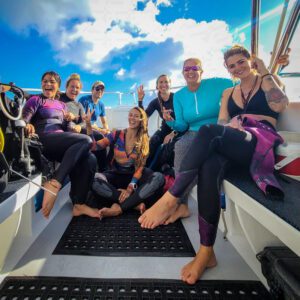
Sun Divers volunteers on their way to monitor. Photo credit: Gil Sassi
As part of our support of the Roatan Marine Park and local coral restoration efforts, Sun Divers contributed boats, tanks, captain time to coral spawning monitoring of grooved brain coral. 18 coral colonies were monitored by over 20 volunteers. These volunteers were trained on how to properly net the corals and collect gamete in the event of a mass spawning event. Unfortunately, one sole coral spawned, but the monitoring provided valuable data to help RMP predict future spawning events.
“Conservation brings science and the community together, so monitoring coral spawning with the diving community is critical for long-term coral restoration efforts and giving our Roatan reef hope. We are grateful to the local dive shops on Roatan, such as Sun Divers, for collaborating with us on these sustainability efforts,” RMP Research Project Coordinator Damaris Dueñas said.
What’s involved in coral spawning monitoring?
A coral spawning monitoring dive is both scientific and entertaining. It’s basically a two-hour (yes, two full hours!) dusk or night dive conducted in a small area where the majority of your focus is on 1-2 coral colonies waiting for that after-dark magic to happen. But while you have one eye on your colonies, you can also focus more intently than on fun dives where you have to keep moving, and watch the reef come to life. If you love macro diving, you’ll love this because you have all the time in the world to let your eyes adjust and discover the interconnected nature of corals, gobies, blennies, crabs, shrimps, pipehorses and more. See the slideshow below for some of our cool findings on one of the dives. Larger life will also pass you by including Eagle Rays, octopus and schools of fish – the butterfly fish seem particularly inquisitive!
Okay, but back to the work at hand. While you’re monitoring, you’ll be capturing important data on an underwater slate including documenting the start & stop time of spawning should it occur.
If spawning occurs, gametes are collected and that’s when the on-land cross-fertilization happens.
How can I get involved?
RMP will continue to conduct coral spawning monitoring with the hopes of kicking off a concerted coral breeding restoration program. If you’d like to get involved you can contact the Roatan Marine Park and Sun Divers to get more details on future opportunities.
We’ll also continue to offer the RMP Coral Restoration Ambassador certification to support the traditional coral nursery maintenance and outplanting. And this is a great way to get involved when coral spawning is not occurring.
What’s next for sexual coral restoration?
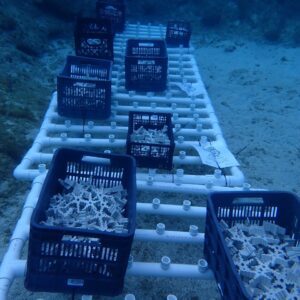
Substrates for sexual coral restoration at Overheat dive site. Photo credit: RMP
Coral spawning monitoring and gamete collection will continue into this year. If you see these substrates pictured right at sites like
Overheat, please do not touch or move them as they are part of the coral restoration efforts.
For the next five years, SECORE International will train, mentor and provide coral breeding restoration tools to the Roatan community so that ultimately we can become self-sufficient in managing coral breeding restoration.
Second Annual Dip & Sip doubles funds raised for girls in Roatan
By Natalie Shuman
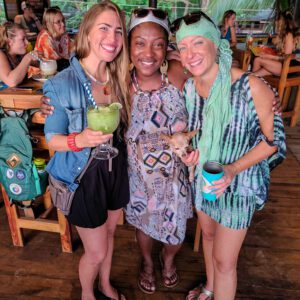
The women behind the Dip & Sip (from left to right): Sun Divers Owner Natalie Shuman, Sundowners Owner Christine Etches, and RPHE Co-founder and Vice Mayor Trudy Hilton.
When the idea for the Dip & Sip came to me in 2021, it came from a desire to create an event that would nurture lasting memories and friendships, but also have a larger, positive ripple effect reaching the women and girls across the island.
I had an idea, but had just joined the community and had no clue where to start. I approached Christine Etches, owner of Sundowners with the concept and her support was almost immediate. Next came her connection to Vice Mayor Trudy Hilton, co-founder of Roatan Peer Health Exchange. Just like that this trifecta of women supporting women fueled an event that in only one year would grow from a fundraiser of $1,000 to a whopping $2,300.
So, what’s the Dip & Sip?
The Dip & Sip is our local way of participating in PADI Women’s Dive Day — a global event designed to celebrate the growing community of female divers, and to amplify the PADI ethos that our beauty and strength is in diversity. Just like that found in nature and in the ocean.
Women divers living in and visiting Roatan get to connect with one another while enjoying two dives exploring Roatan’s vibrant reef (the dip) and then a sunset happy hour with food & drink at Sundowners overlooking the gorgeous Half Moon Bay (the sip).
All resources for the event are donated by Sun Divers and Sundowners, including the time and expertise of Sun Divers’ instructor team (60% women!) and captains, so that 100% of the proceeds can go to Roatan Peer Health Exchange.
Why support Roatan Peer Health Exchange?
While PADI Women’s Dive day is about ‘opening doors to the underwater world,’ the reality is that in our island community like so many others, there are so many barriers that prevent women from entering the water, or school or the workplace. We want to make sure that our event first begins to address these barriers.
Consider this: one in four Honduran adolescents between the ages of 15 and 19 have given birth. And Roatan has the second highest incidence rate of AIDS in all of Honduras. Our local girls and women are also burdened by period poverty — the lack of access to menstrual products, as well as education about menstruation that lacks stigma.
Roatan Peer Health Exchange was the perfect fit for a recipient of our funds, because they offer sexual education and resources to female youth of Honduras, ages 13-25. Their primary program consists of ten interactive teaching sessions or ‘charlas.’ The magic of these ‘charlas’, is their peer-led model. Facilitating the charlas are Peer Health Ambassadors: young, enthusiastic members of the community who have been trained to be leaders of the curriculum and to educate their peers. The young girls receiving the education are more likely to listen to the messages being delivered by an adolescents navigating the very same issues they are.
How Dip & Sip supports

International Girls Day 2021
International Girls’ Day, October 11, 2022, provides another great educational platform for Roatan Peer Health Exchange. On this day, they hold an event where young women attend life skills workshops, and receive important resources to improve their daily lives.
In 2021, and again in 2022, the funds raised by the Dip & Sip fund the purchase of menstrual cups for the youth attending the International Girls’ Day event. Lack of access to menstruation products can be the difference between a woman attending school, going to work and being able to do something fun and recreational like taking an open water course. Providing menstruation cups might seem like a small act, but they remove huge barrier for girls and women.
Double the funds, means double the impact
Thanks to the generosity of all of our event attendees and private donors, we increased the amount of money raised by 130% over last year. With these additional funds, we’re excited to now also be able to
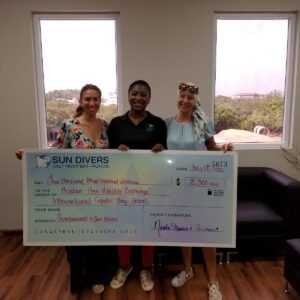
The Dip & Sip raised 130% more for the girls of Roatan in just one year!
address access to the ocean for local youth. This year we will give our first Open Water certification scholarships to young women participating in Roatan Peer Health Exchange’s programs. The scholarship will also include an introduction to the career paths that within the dive industry.
So many of us are fortunate to reap the mental, physical and emotional benefits of diving. We hope to bring this to these girls, along with a deeper, more meaningful connection to the coral reef that makes up their own backyard. They are after all, the future leaders who will be play a role in the decision making that either supports or sacrifices our local ecosystem.
Scuba diving has such a profound impact on people’s lives that there’s no telling what paths it could open up for these women. But we’re excited to find out!
If you’re interested in learning more about the Dip & Sip, Roatan Peer Health Exchange, or sponsoring an Open Water certification scholarships, feel free to reach out to us.
Top 10 Roatan Dive Sites
When people come to dive in Roatan for the first time, the question is always the same: What are the top-rated, must-see dive sites on the island?
Just one look at the Roatan Dive Sites Map and you can see that there are hundreds of sites to choose from. So, choosing just 10 is no easy feat. That’s why we decided to ask the experts: the Sun Divers’ team of instructor-divemasters.
Needless to say, there was much deliberation and debate. And some really tough decision making. To appease our expert panel, we added an “Honorable Mention” category. That way, no one felt guilty for leaving a spectacular Roatan diving experience off the list.
Before we get to the results, like any survey, you should know our methodology.
Choosing the Top 10 Roatan Dive Sites
It started with getting the most qualified experts to contribute. Enter the Sun Divers team of PADI instructors. Consisting at the time of eight members, this group of experts represents a combined 80 years of experience in Roatan diving. The group also brings a diverse set of expertise and interests. Some love the macro, some love the adventure of walls and swim throughs, and some love the simple serenity of Roatan’s reef. The combined experience of the group gives our survey results a lot of weight.
Each person provided their Top Ten list and then rankings were weighted based upon how often a site was selected and where they sat in the ranking from 1-10, with the number one spot being their most favorite site here in Roatan.
What is so special about Roatan diving?
One of the most difficult aspects of a survey like this is the sheer volume of sites and options. Unlike many dive destinations that have limited sites to select from, Roatan is a 40-mile-long island, and the entire coastline (over 80 miles) is surround by reef. It not only represents the best of Honduras scuba diving, it ranks on many best of lists for the Caribbean. No matter where you jump in, you will be surround by life and reef as far as you can see. Much of the reef is unnamed so the sites that are listed here are from the list of named options.
In addition, the island presents a highly diverse selection of experiences. Sheer walls, expansive plateaus, exciting drifts, spectacular wrecks, expansive swim throughs, captivating macro, out-of-this world night dives, and deep technical options. All of which are engulfed in life and color.
There is no way to have the perfect top 10 list because everyone has different taste. But with this list, I guarantee there will be something for everyone.
So, without further delay here is the Sun Divers Top 10 Roatan Dive Sites list.
Drum Roll Please…
Top 10 Roatan Dive Sites
#10 – Seamounts
#9 – Half Moon Bay Wall
#8 – Rockstar
#7 – Mandy’s Eel Garden
#6- Sea Quest Deep
#5 – West End Wall
#4 – Blue Channel
#3 – Mary’s Place
#2 – Hole in the Wall
#1 Texas & Pablos
Top 10 Roatan Dive Sites Details
Skill Level: Advanced
Location: approximately 12 miles south of Roatan
Key Features: Massive schools of fish, robust current, unspoiled reef
List-worthy because: The Seamounts are one of the highlights of diving Honduras, however, they fall lower on the list because of the challenges to get there, and the variability of the conditions making it an advanced dive.
The Seamounts are exactly as the name suggests, two underwater mountains rising from the depths to provide a sanctuary of life in the middle of the ocean. The circle of life is more evident on the seamounts than anywhere else on the island with schools or predatory jacks, pelagic hunters, and giant schools of fish. The reef is pristine due to the low diving pressure, but it also comes with unpredictable currents and no land references when on the surface. For these reasons, diving the seamounts is idea for advanced divers.
At Sun Divers, we often combine a trip to the seamounts with a once-in-a-lifetime day trip to remote islands Cayos Cochinos.
This Honduras dive site would undoubtedly rank higher if it were more accessible, but the sheer beauty makes it a bucket-list option.
Skill Level: All
Location: a stone’s throw from Sun Divers and Half Moon Bay (hence the name!)
Key Features: Beautiful wall with enormous barrel sponge formations.
What makes it special: Half Moon Bay wall could be considered our back yard – literally a minute from the dock. But aside from a convenient one-minute trip from our dive shop, Half Moon Bay Wall is known for it’s dramatic wall that descends vertically from 50 to 120 feet, and for the beauty of the corals and Giant Barrel Sponges that adorn it.
Skill Level: All
Location: about 10 miles up the Northern coast just off of Pristine Bay
Key Features: A series of large pillars and platforms off of the main wall create a wide channel for divers to be surrounded on both sides for the duration of the dive.
What makes it special: This is one of those dive sites that makes you feel small in a good way. From the mooring line you will drip down into a large trench at 60 ft where you’ll remain for most of the dive. On one side of the trench is the main wall and on the other are a series of pinnacle coral structures the run parallel to the wall… giving you the feeling of being surrounded by coral. As you continue to the end of the dive you will shallow up in a field of soft corals and variety of sponges in the area considered the Garden of Eden.
Skill Level: All
Location: Southern end of West Bay
Key Features: Brilliant sand patch that Eagle rays love, easy-to-access swim throughs, and expansive Garden Eel habitat
What makes it special: Jumping in over the sand patch is such a welcoming experience to the reef. The sand reflects the sunlight in spectacular fashion as you cruise to the first swim through welcoming you to the reef. On the other side of the swim through you find yourself staring down an extensive wall.
While not as deep as other Roatan dive sites, at the 70-foot mark, the reef will again transition to sand – which is where you will find a number of large colonies of Garden Eels peacefully plucking food from the flowing water. Don’t get too close or they will withdraw into their holes. If you stay just far enough away, you can marvel at the true “garden-like” habitat that they create.
Also, on this dive you will find big mantis shrimp, sting rays, and frequent passing Eagle Rays.
Mandy’s is a great spot for all levels of divers, but especially welcoming to new divers because of the mild topography and limited currents.
Skill Level: All
Location: Between West End and West Bay… about a 5-minute ride from the Dive shop.
Key Features: Sandy plateaus surrounded by patch reef and shallow walls and the Roatan Marine Park’s Coral Nursery trees
Like so many of Roatan’s dive sites, this is another site that is nice for beginners and advanced divers. The site is divided into a “shallow” and “deep” sections marked by different mooring lines. The shallow site is perfect for new divers while the “deep” site flows out to a short wall. The deep site mooring line is in 40 feet of water, which creates a deeper profile – therefore a more advanced diver. The site itself, doesn’t present any other advanced challenges beyond air and NDL limitations.
One of the highlights is swimming through the Roatan Marine Park’s coral nursery, which is where they rescue fragments of opportunity, as well as propogate new fragments for coral restoration. Many times you will see our own team in the nursery, certifying volunteers to become Roatan Marine Park Coral Ambassadors.
Skill Level: Advanced
Location: Southern West Bay, on “The Point”
Key Features: West End Wall frequently features a nice current which creates an environment supporting a lot of fish life.
What makes this dive special: Located on the southwestern tip of the island, it is often one of the islands most dramatic drift dives. The site starts close to the iron shore at 20 feet and then drops dramatically to 90 feet. Throughout the duration of the dive you will run into a variety of deep caverns carved from the shallows to the deepest parts of the wall. On a day with crystal clear viz you might even spot the Josie James wreck that rests at a depth of 200 feet (beyond recreational dive limits).
The predictable current leads to a very fishy dive often featuring endless trains of Creole Wrasse, big schools of Jacks, and the occasional eagle ray passing by.
If you time it right, in August, Silversides can often be found in the crevices of the wall – which in itself is a bucket-list experience.
Skill Level: All
Location: Between West End and West Bay Straight off of Tita’s Pink Seahorse beach bar
Key Features: Beautiful wall, long swim-throughs, macro heaven, and grassy habitat
What makes this dive special: Diving at Blue Channel is like having three dives in one site. Most often, your dive will start on the wall and you will enter a beautiful channel that connects the open ocean to the inner waterway. As you enter the channel, you will immediately come upon an entrance to a swim through. But this isn’t just any swim through. Be prepared to weave your way through a maze of tunnels for the next seven or eight minutes. There are easy and frequent exit points, but why would you? The swim through is epic.
At the end of the swim through you will be mid-channel and starting to enter into a macro-lovers heaven. As you continue along the channel you will start to notice more of the turtle grass the covers the inner water ways. This grassy area presents a completely different habitat introducing another ecosystem to explore. Tons of Nudibranchs, starfish, and upside-down jelly fish with symbiotic relationships with small critters make for a photographer’s dream. Keep heading toward shore and you might discover a “wreck” or more like a small sunken sailboat teaming with life. What’s that big shadow in the distance? Oh, just a huge school of “goggle eyes,” also better known as Bigeye Scad. Swim toward them and watch the school part ways and then engulf you. Keep an eye out, sometimes huge barracuda like to hang out in the eye of the Scad storm.
Unfortunately, your dive will have to come to an end, but you have been spending the last 10 minutes in 15 to 20 feet of water, doing a delightful swimming safety stop.
Skill Level: Advanced
Location: about 15 miles from the dive shop on the South side of the island (French Harbor area)
Key Features: Fascinating Geological reef formation featuring deep crevices covered in life
What makes this dive special: Mary’s Place is considered one of the world’s top dive sites. This site is unique due to the way geologic events have shaped the site. At one time, this site was a normal section of the reef, but many thousands of years ago a geologic event split part of the reef off from the rest of the plateau. The result of the event is a giant crevice that extends from the surface down to 100 feet.
The dive usually starts at the deepest points winding your way through the multiple crevices as you work your way to the shallows. Each crevice is covered in hard and soft flowing corals giving you the sense of swimming through hallways of life.
The southside of the island often presents windy weather and rougher water, which makes getting to Mary’s Place a bit weather dependent. In addition, due to the deeper profile, it is recommended for advanced divers.
Skill Level: Advanced
Location: Just off of the Gibson Bight channel, about 5 minutes from the shop
Key Features: Deep chute followed by a maze of swim throughs
What makes this dive special: You start the dive in 20 feet of water and then immediate drop into a steep cavern that doesn’t end until you hit 100+ feet. There is a keyhole feature at about 150 feet which is usually patrolled by a school of horse-eyed jacks. Beyond the keyhole is the deep blue of open ocean. It is a spectacular sight and by itself is worth the dive.
But your experience has just begun. There are multiple routes to take on this site, but a popular one is to turn up another chute that takes us back toward the shallows in a steep incline. The entire trip down and back up is about 8 minutes. At this point we exit the chute in about 35 feet and begin exploring the maze of swim throughs, caverns and horse shoe passages, that give the shallow rock formation it’s nickname of “swiss cheese.” That will consume the remainder of the dive. With so many swim throughs it is one of those sites that can be a different dive every time you do it.
Skill Level – Advanced
Location – “The Point” on the southwestern tip of the island
Key Features: Robust drift and endless schools of fish
What makes this dive special: Although it is technically two sites, the natural current in the area will usually carry you over both sites. The current is also the primary reason why these sites are special, it brings nutrient rich water through the area which attracts numerous schools of fish ranging from the thousands of blue creole wrasse to the predatory jacks and tunas that will flash through the area.
The drift element makes this an advanced dive as well as the constant depth. It is best done on nitrox to maximize the drift depth in the 40 to 60 foot range. There is also a beautiful Barrel Sponge “garden” where you can usually spot the elusive Sargassum Triggerfish as well! The water conditions on the point can get a little rough, so this is a weather dependent site, but it is always worth the wait.
Honorable Mentions
And what list would be complete without an honorable mention:
- Bear’s Den: You feel like an underwater explorer in the truest sense when you start this dive. From the moment you drop in, you’re greeted by the thrill of a swim through. Then throughout the dive, you can explore the shallow water caverns that give this site its name. If you’re in luck, you’ll find a den filled with Glassy Sweepers backlit by sun rays that make their way through holes in the roof.
- Spooky Channel: Some people love it, others hate it. It is a geological wonderland as a prehistoric natural sliver of a channel (as seen from the surface) that opens up to a cavern the size of a large building that you would never suspect before you jump in. The channel can be incredibly clear or a murky haze (ie. “spooky”). Either way, you will experience an original unforgettable dive.
- Gibson Bight: This site has nutrient rich water coming from Gibson Bay keeping it teeming with schools of fish and diverse marine life. But, what we really love about this site, is the cool J-shaped canyon with an overhang that creates an interesting swim through and then spits you out onto the wall. Spotted eagle rays can usually be seen towards the bay and we always seem to have seahorse luck at this site.
- The Odyssey: One of the two premier wrecks on Roatan, The Odyssey is over 300 feet long and has been submerged since 1997 so it has a lot of life encrusting the old cargo hull. The dive is for advanced divers only as the wreck sits in 100 feet of water. Best done on Nitrox. If you like big wrecks, you will also enjoy El Aguila – another of Roatans premier wreck dives.
- Cemetery Wall: A rare site for us to visit due to its location on the unpredictable south side of the island… but on those rare days when the Southside is a better option, we will seek out Cemetery Wall due to its fields of flowing soft corals and dramatic sheer wall making it a completely unique experience.
Let the argument begin… we would love to hear your rankings as well. Let us know what sites we should consider for our list. Want to book a trip where you hit all Top 10? Contact us today and let’s start planning!
Truly reef-friendly suncare products coming to Sun Divers
After a recent trip to West Bay where we had to comb through resort gift shop after gift shop in search of reef-safe sunscreen for our son who was visiting, we realized that Roatan has a major chemical sunscreen problem. It took us one whole hour and five shops later to finally find a sunscreen product that would not be damaging to the reef or our son’s health.
If we struggled to find reef-friendly sunscreen on the island, and we live here, what are the thousands of people who visit ever year wearing on their skin when they visit our beautiful island to snorkel, dive, swim, soak and float right next to one of our most loved and most important resources: the coral reef?
Usually ones to opt for hats or UV-protection clothing, we realized just how blind we’ve been to the lack of reef-friendly sunscreen and beauty products on the island. And we watched in horror as hundreds of people slathered with the telltale sign of chemical sunscreens splashed and played right next to one of our most beloved and valuable resources: the coral reef.
We HAD to do something about this and fast.
That hunt to find where to buy reef-safe sunscreen in Roatan prompted outreach to a company that one of our employees had recently been raving about and encouraging us to use for our defog: Stream2Sea.
The idea for the Sea2Stream skincare line came about after a similar experience on a Palau liveaboard for founder and fellow scuba diver Autumn Blum. “We were showering on deck with fragrant suds running right overboard, putting leave-in conditioner in our hair, slathering on chemical-based sunscreens then jumping back in the ocean to repeat the process.”
Like us, Autumn knew she had to do something. As a chemist, entrepreuner and ocean advocate she along with the team at Steam2Sea created a skincare line that they empirically know is safe for our marine environment and safe for our own bodies.
Why We Love Stream2Sea
Today, Stream2Sea is the only mineral-based sunscreen on the planet that’s been tested and proven safe for freshwater fish, saltwater fish, and coral larvae, and has passed the stringent HEL Labs Protect Land + Sea certification.
Steam2Sea formulas are also good for you! Their formulas are enriched with a proprietary and potent antioxidant-rich blend of: wakame seaweed, aloe vera, tulsi (holy basil), green tea, and olive leaf that protect and nourish from head to toe. They also actively avoid known endocrine disruptors and chemical ingredients that impact our water ecosystems and cause bodily harm.
It gets even better: All of their products are biodegradable and available in either recyclable sugar cane resin packaging or PCR plastic (from recycled milk jugs).
Our Stream2Sea Product Line
Soon, you will see Stream2Sea SPF 30 Sport Sunscreen and Hydrate Lip Balm for sale in our shop, as well as their Reef-Friendly Mask Defog on our boats.
Check out this blog article to learn more about Stream2Sea’s ingredients, rigorous and unmatched product testing, as well as skincare ingredients you should be running from.
Is your sunscreen truly reef safe?
As a scuba diver you’re automatically an ocean enthusiast and possibly even an advocate. And unless you’ve been hiding under a rock, you know that most sunscreens on the market contain chemicals that are damaging to that ocean environment that you love so much. But you also don’t want to end your dive trip with a funky mask tan or even worse, a mask-shaped burn – those hurt and aren’t very stylish.
To make matters worse, there are about a gazillion different sunscreen options on the shelf with half of them now claiming to be “reef-friendly”. But what does that even mean? And how do you know which one to choose?
It’s a dilemma we constantly see people facing at our dive center and have even been faced with ourselves. Which is why we’re bringing Sea2Stream suncare products to our customers and have developed this helpful resource guide for how to determine if your sunscreen is truly reef safe.
Introducing the HEL-List
According to the Haereticus Environmental Laboratory, the HEL LIST is a list of chemicals that are known pollutants in many different environments (freshwater streams, river, beaches, and ocean systems) or wildlife (e.g., corals, fish, birds, marine mammals, sea turtles). All of them pose a threat to ecosystem health.
It’s a great list to google next time you’re at the store stocking up on sunscreens or to audit what you have in your cupboards right now.
The HEL LIST includes:
- Any form of microplastic sphere or beads.
- Any nanoparticles like zinc oxide or titanium dioxide.
- Oxybenzone
- Octinoxate
- 4-methylbenzylidene camphor
- Octocrylene
- Para-aminobenzoic acid (PABA)
- Methyl Paraben
- Ethyl Paraben
- Propyl Paraben
- Butyl Paraben
- Benzyl Paraben
- Triclosan
HEL has developed a certification for reef-friendly sunscreen called the Protect Land + Sea certification, that we like because they independently test products for ingredients on its HEL-List. And the list gets updated each certification period as more research uncovers which chemicals pose a threat to wildlife. When this happens, companies must resubmit their products for certification. See which companies are willing to make this investment to protect our fragile ecosystems (spoiler, it’s a short list!).
If you want a great explainer on WHY you should avoid these ingredients, check out Stream2Sea’s Ingredients to Avoid guide.
Your Health Matters Too
It’s great to make a more eco-conscious selection of sunscreens because you want to make a difference for our planet. But what’s better for the enviroment is also better for you when it comes to sunscreens. Your skin is your largest organ and it absorbs anything you put on it, both synthetic and natural. The FDA has only found two common suncreen ingredients that could be classified as safe and effective: Zinc Oxide and Titanium Oxide. But while these might be safe for use on our skin, these nanoparticles can cause development disorders in sealife.
A great rule of thumb is if you can’t pronounce it, you might not want to put it in or on your body. If you’d rather play it safe, look for UV protective clothing, wear a heat and seek the shade!
Why We Love Stream2Sea
After our own wild chase to track down reef-safe sunscreen here on Roatan, we decided to reach out to Stream2Sea to see if they’d partner with us to provide our customers with a better sunscreen option. And they said yes! This is why we’re thrilled about this partnership:
- We Share Values! Like Sun Divers, Stream2Sea is a business that believes
 that you can be good at business while also doing good, by prioritizing purpose as much as profits.
that you can be good at business while also doing good, by prioritizing purpose as much as profits. - It’s Protect Land + Sea Certified! Their SPF 30 Sport Sunscreen, which is available at our dive center, has undergone the rigorous, independent testing to determine that it is truly reef-friendly.
- No Zinc or Titanium nanoparticles! The EcoSafe Zinc™ used by Stream2Sea is naturally-coated, USP grade and Cosmos certified.
- Lotsa antioxidants! Too much exposure to the sun can release free radicals that rage on the collagen and elasten fibers in your skin. This leads to more wrinkles, dark skin spots and saggy skin, which no one wants. The good news is that antioxidants can halt free radicals from wreaking havoc on your good looks. And Stream2Sea is packed with them from ingredients like green tea, holy basil, olive leaf and aloe.
Sun Divers is now carrying Sea2Stream SPF 30 Sport Sunscreen and Hydrating Lip Balm, as well as using their mask defog on our boats. Every little step counts and we hope you’ll join our movement!
Roatan vs. Utila: Which is the best diver’s paradise?
Is Roatan or Utila better for diving? While they’re so close in proximity, they couldn’t be more different in terms of the experience they offer both under water and above on land. And if you’re already making the trek to one, it really is worth visiting the other. But if you must choose, consider a few factors to decide which island is more ‘your scene,’ including the marine life, dive center culture, island vibe and more.
Full disclosure: We’re lucky enough to live on the island paradise of Roatan – so it’s hard to make this 100% unbiased. But we’ve also been fortunate to travel the world and appreciate sound and honest advice that some travel blogs provide. So, in our attempt to pay it forward, here’s our take on the differences divers will experience when in Roatan and Utila.
Creature Features
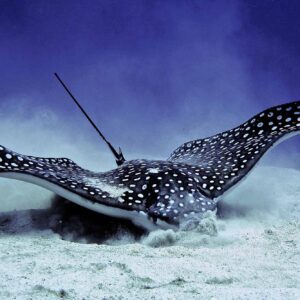
Up close encounters with eagle rays like this one are a common and always welcomed occurrence in Roatan.
Though they are part of the same MesoAmerican Barrier Reef system (the world’s second largest after Australia’s Great Barrier Reef) local conditions and reef protection efforts have a huge influence on the type of marine life that you see. We had always heard that Roatan is “fishier” and that laymen description is pretty fitting. In contrast to Utila, Roatan is teeming with life. Schools of fish, large and small, groupers, triggerfish, gobies, blennies, filefish – if you can name it, you will see it when diving Roatan. Eagle rays and sea turtles – hawksbill, green and even the occasional loggerhead – are almost guaranteed if you’re getting in at least a couple days of fun dives.
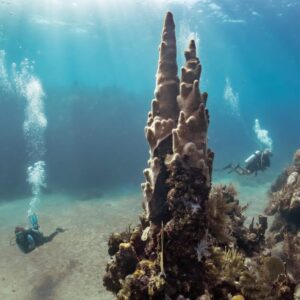
Thriving pillar coral like this one can be seen in abundance on Utila. Photo credit: Gil Sassi
What Utila lacks in its fishiness, it does make up for with its coral. We were consistently captivated by colonies of thriving pillar coral towering majestically with their polyps swaying in unison with the surge. Enormous elkhorn are the perfect focal point for photos, sun rays shining down upon them as if from the heavens (cue angelic singing). The coral life really is a sight to see.
We’ve always heard Utila is where you go to see the pelagic life in this region. Nurse sharks were certainly more prevalent than in Roatan, but the much sought-after whale shark remained elusive, and we were told that had been the case for much of the year.
Dive Site Variety
Both Roatan and Utila are fortunate to have a fringing reef, encircling the islands and allowing for diving on all sides. But with an area of 32 square miles, Roatan is almost twice the size of Utila equating to more reef to explore and a wider variety of dive sites. There are literally hundreds of Roatan dive sites around the island with a wide variety from wall dives, macro, swim throughs, wrecks and more.
Dive Center Culture
One of the more striking differences between Roatan and Utila is the dive center culture. Most dive centers in Utila are focused on being training centers for those who’ve decided to buck the traditional path to professionalism and pursue an exciting and adventurous career in the dive industry. They offer longer-term lodging accommodations with zero to a hundred packages for people who need to work from the beginner level to a professional track.
This translates into an energetic and international vibe from throes of young people who are incredibly passionate about the ocean and diving. As a fun diver, you sometimes can tag along on the training dives at a discounted rate.
This also translates into a need for bigger boats to accommodate more students in addition to fun divers. Bigger boats, usually means slightly longer travel times and many of the shops have an early-morning departure time of 7:30 a.m. compared to 8:30 a.m. or 9:00 a.m. more typical on Roatan.
So, prepare yourself for some bleary-eyed dive trips in Utila, especially if you want to take advantage of its well-known night life.
Island Night Vibes
As a mecca for youth who are seeking the sea as a way out of the normal nine-to-five corporate culture, it’s no surprise that Utila is also known as the “party island.” As one of our divers stated, “I felt like an old man.” And he was only 30 years old!
But ‘age ain’t nothin’ but a number’ and if you’ve got the energy, Utila’s got the night vibes. A stop off at the famous (or infamous) Skid Row to witness – or even participate – in the guifity challege is a must. What is the guifity challenge you ask? Well it involves copious amounts of local, herbacious alcohol and spinning until you want to yak – all for a free Skid Row shirt. Totally worth it, right?! Full Moon parties celebrating recent Divemaster and Instructor certs at the Jade Seahorse are known to be a good time. And Underwater Vision’s Trivia Nights are a who’s who of DMTs and instructors in the making.
Would you do this for a t-shirt? Not gonna lie, we might!
By contrast, Roatan’s party crowd is a more mixed demographic. It’s young and old, local and expat, and pretty much always a good time though there’s probably a lot less “swiping right” opportunities than on Utila if you catch our drift. There are monthly EDM dance parties by the beach at Tequila Jack’s in Brisas del Mar, live music and music trivia nights weekly at the iconic Sundowners Beach Bar (next to Sun Divers), late night dancing at Frank’s Hideaway and many, many more beach bar hangouts in between. We LOVE weekends at the Roatan Island Brewing Co. – I mean, where else can you find a killer brewery in the middle of a tropical rainforest? And the Roatan Local Market rotates locations and creates a cool hangout spot where you can also support local small businesses.
Accommodations & Remote Work Challenges
Lodging options is probably one of the starker differences between Utila and Roatan. While Roatan has something for everyone from hostels and dorm rooms to boutique hotels and luxury vacation rentals, options in Utila are a bit less varied. Looking for a place to stay in Roatan? Contact us for our list of “diver approved” lodging options for every budget size.
People often describe Utila as a backpacker locale, and the lodging options show why. There are many hostel options, budget AirBNBs, but luxury or boutique accommodations are very limited. We stayed at one of the newer hotels called
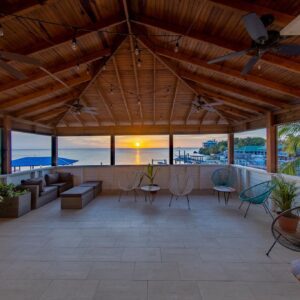
Roatan Beach Desk is one of the places where you can work in both beautiful and functional spaces.
the Manurii Boutique Hotel and found it to be a beautiful little boutique oasis that we’d happily return to – though one of us (who’s 6’4”) would appreciate a hotel with a king bed.
While we were there solely for vacation and happy to disconnect, we experienced a few long-lasting power outages that we noted would make working remote from Utila quite challenging. We were told that daily power outages could be expected and that sometimes there are days when you only have a few hours of electricity. This can be an excellent forcing function for anyone who needs to learn how to disconnect and live in the moment, but would present challenges if you’re looking to work while you get your wanderlust in.
We find Roatan to be the perfect paradise for digital nomads with many accommodations providing high speed cable internet and infrequent and usually scheduled power outages.
So how to choose?
Don’t! Visit both and contrast and compare for yourself!
But if you have to decide, think about what element of travel is most important to you and which island is going to fulfill that best. Maybe you want to dive hard and play harder and need a night life scene that can meet your night owl tendencies. Or you have a certain living standard you want to meet wherever you rest your head and want a wide variety of dive experiences on the daily.
Wherever you choose, we promise the Bay Islands will not disappoint and you’ll only leave wanting to come back for more.
Looking for more personalized advice to help plan your dive trip? Feel free to contact us for more details on diving and vacationing in Roatan and the Bay Islands.
Remembrance and Restoration: The Story of The Chief’s Quarters
The Chief’s Quarters is more than just a dive site on a map. It’s a remembrance of a great man who was a medaled Navy officer and lover of the sea. It’s also a site that is a training ground for new scuba lovers, an exploration ground for experienced divers and the birth site of many new coral colonies as the designated out planting site of the Roatan Marine Park Coral Restoration program. Here’s what makes The Chief’s Quarters special to Roatan and to the people who dedicated it to our dive community.
How The Chief’s Quarters came to be
Like so many of us, Roatan is Dave & Amy Canaan’s happy place. When they decided to make Christmas gifts more about experiences than presents, their daughter Madison chose for the family to get Open Water certified in Roatan. Now its their home away from home; where they’ve made many happy family memories and have connected with many newfound friends! And come 2022, Roatan will become their actual home – just to give you a sense of how much they love this place!
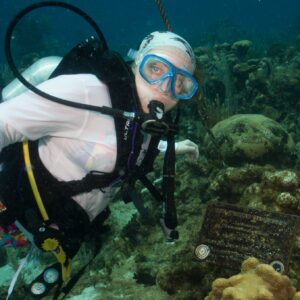
The Chief’s granddaughter Madison at the dive site dedicated to her grandfather.
And while they’ve been fortunate to share this happy place with many friends & family, the one person they never got to share it with was Dave’s dad, Richard Canaan – the very person who inspired Dave’s love for the ocean.
So, while Dave and his family couldn’t share Roatan with Richard in life, he decided they’d share it in spirit. On February 23, 2018, the Canaan family dedicated the site to his father through the Roatan Marine Park’s Name a Dive Site program.
The Name a Dive Site program offers people a way to demonstrate their commitment to Roatan’s community while honoring loved ones. It also supports the RMP Marine Infrastructure Program funding the installation of mooring lines that help increase diver access to the Mesoamerican Reef in Roatan, while decreasing mechanical damage to the reef caused by anchoring.
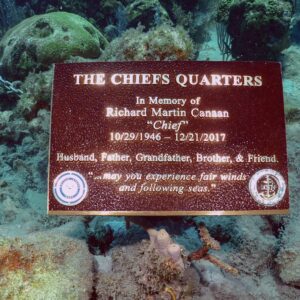
The Chief’s Quarters dedication plaque.
The dedication of the site included the installation of a plaque that sits at the base of the mooring line reading “…may you experience fair winds and following seas.” According to the Department of Navy – Navy Historical Center: ““Fair Winds and Following Seas” is really two quotes originating from different sources. The two quotes are a nautical phrase of good luck–a blessing as it were–as the person, group, or thing it is said to departs on a voyage in life.”
Over the years, Dave and Amy have shared the site with many of Richard’s loved ones including a group of 49 friends and family members who took a cruise to Roatan and were able to snorkel and dive the site. Recently, Dave’s sister Wendy did her Discover Scuba Diving experience, getting to connect with the memory of her dad and the ocean that he loved from the beautiful depths below. She’s now on her way to becoming Open Water certified.
Meet ‘The Chief’
Richard Canaan was a husband, father, grandfather, brother and friend. He was also a diehard Kansas City Chiefs fan and a Navy man, earning the patriarch of the Canaan family the nickname and title of ‘The Chief.’
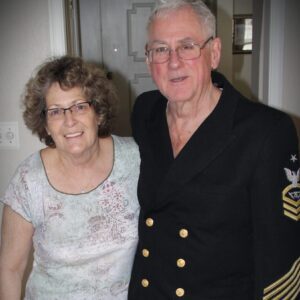
Richard Canaan, a.k.a. The Chief, with his wife Gayle Canaan.
The Chief who dedicated 22 years of his life to the U.S. Navy and then another 22 years in the Civil Service, was stationed in Japan, Norfolk, VA., San Diego and Port Hueneme Calif., and Jacksonville, FL.
One of Dave’s fondest memories is flying to Hawaii as a young boy (twice) and sailing on the Navy ships with his father back to San Diego.
Richard was always a proud Navy man who would stop and talk to any other fellow Navy man regardless if it was a grizzled old vet like himself or someone newly enlisted. He could always be seen wearing a navy hat from one of his service stations or drinking coffee from a cup emblazoned with a ship on which he had served. Right up to the day that he lost the fight with Alzheimer’s he was always Navy proud. He might not have remembered everything he did for his family, friends, and Country, but we will never forget.
Why we love The Chief’s Quarters
We like to say we’re more than a dive center, we’re a community center for diving fanatics. And Amy and Dave have been a longtime part of that community, fun diving many times a year and supporting our team from afar when the pandemic had put a halt on the fun.
Over the years they have become as much a part of our family as we’ve been of theirs. And the Sun Divers team has been honored to get to be there for so many fond memories, including those that have happened at The Chief’s Quarters. Which is why the site means a lot to us.
But “Chief’s” as we call it, is a Roatan dive site that means a lot to the whole community. That’s because Chief’s Quarters is a dive site that’s perfect for everyone: snorkelers, new divers and experienced divers. The mooring line sits on a sand patch at 20 feet which offers an expansive area for instructors and students to perform Open Water and Advanced Open Water skills, and at night it becomes the perfect place for divers to safely shut off their lights and become bewitched by the bioluminescence phenomenon The String of Pearls.
From there it gives way to long and slowly descending plateau at 40-50 feet, and then the wall that drops to 120 feet before it hits another sandy decline. It’s a common area to spot both Hawksbill and Green Turtles.
And its memorial plaque is diligently protected by Threespot Damselfish. Like a good mate, he’ll dash out and squawk at you for even laying so much as a finger on The Chief’s plaque. It’s always hard not to LOL underwater at the fishes’ hyper territorial protectiveness. Dave and Amy are convinced there is a little bit of the “Chief” in that fish who can be a bit ornery!
The Chief’s Quarters is also an important site for the future of the Mesoamerican Reef. It is the designated out planting site for The RMP Coral Restoration Program since it meets the optimal depth requirements for Elkhorn and Staghorn. Since June 2020, restoration efforts have yielded out-planting of 340+ fragments.
In September 2021, Amy decided she would become a certified Coral Ambassador. She was excited about the opportunity to leave the Roatan reef a bit more beautiful (and healthier) than she found it, but she was ecstatic when she learned that the very place these activities would happen was the site dedicated to her father-in-law.
Want to check out The Chief’s Quarters for yourself?
Contact us to plan your next diving trip in Roatan. “Chief’s” as we call it will likely be one of the many spectacular Roatan dive sites you have the chance to explore.
Want your own dive site?
Interested in memorializing someone you love – or just your love for Roatan and diving? Consider supporting the Roatan Marine Park’s Name a Dive Site program. You can find more details here.


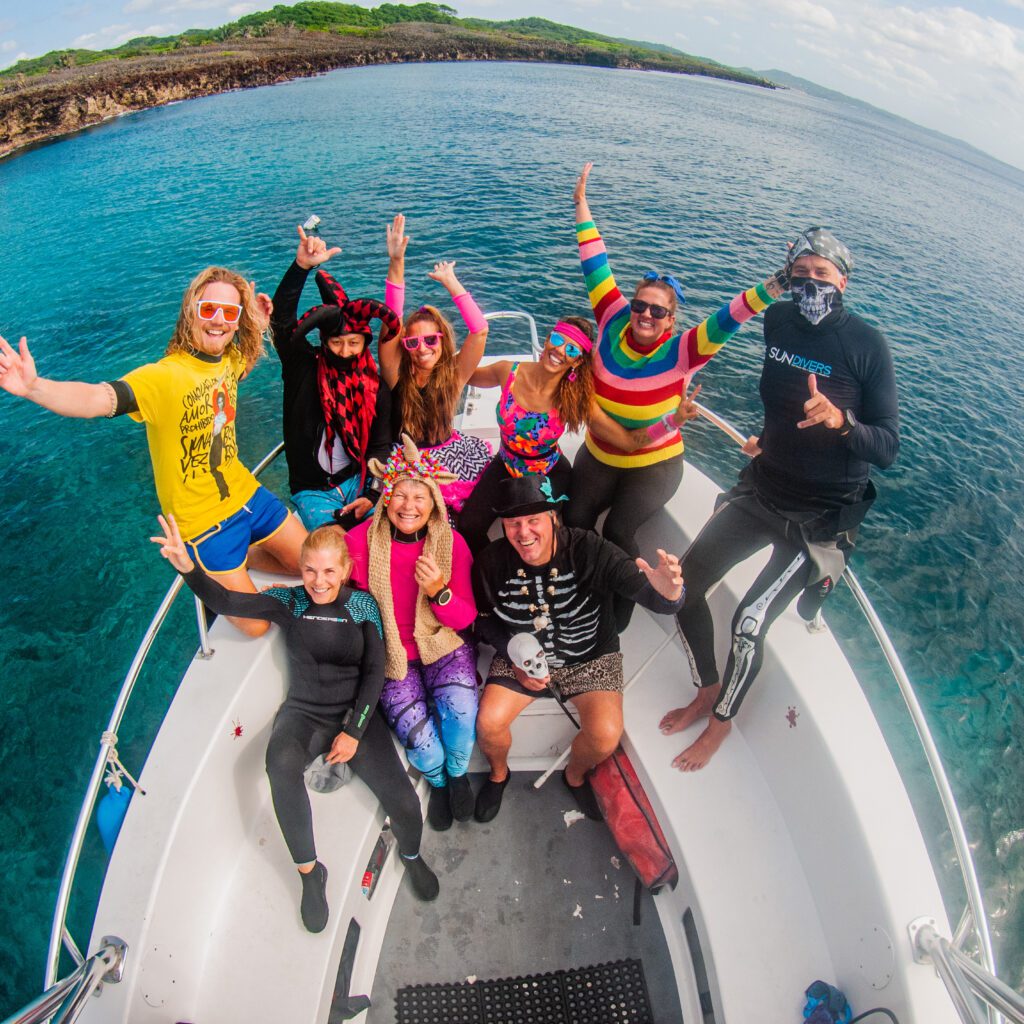
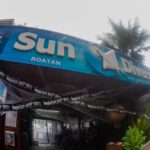
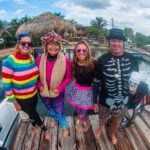
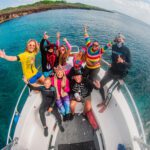
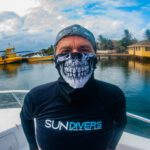

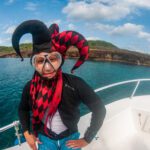
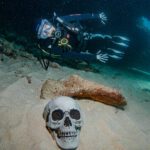
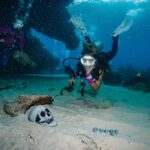
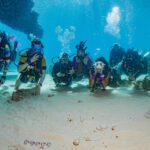
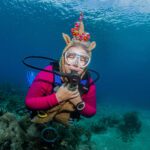
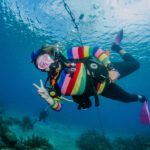
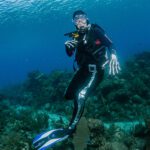
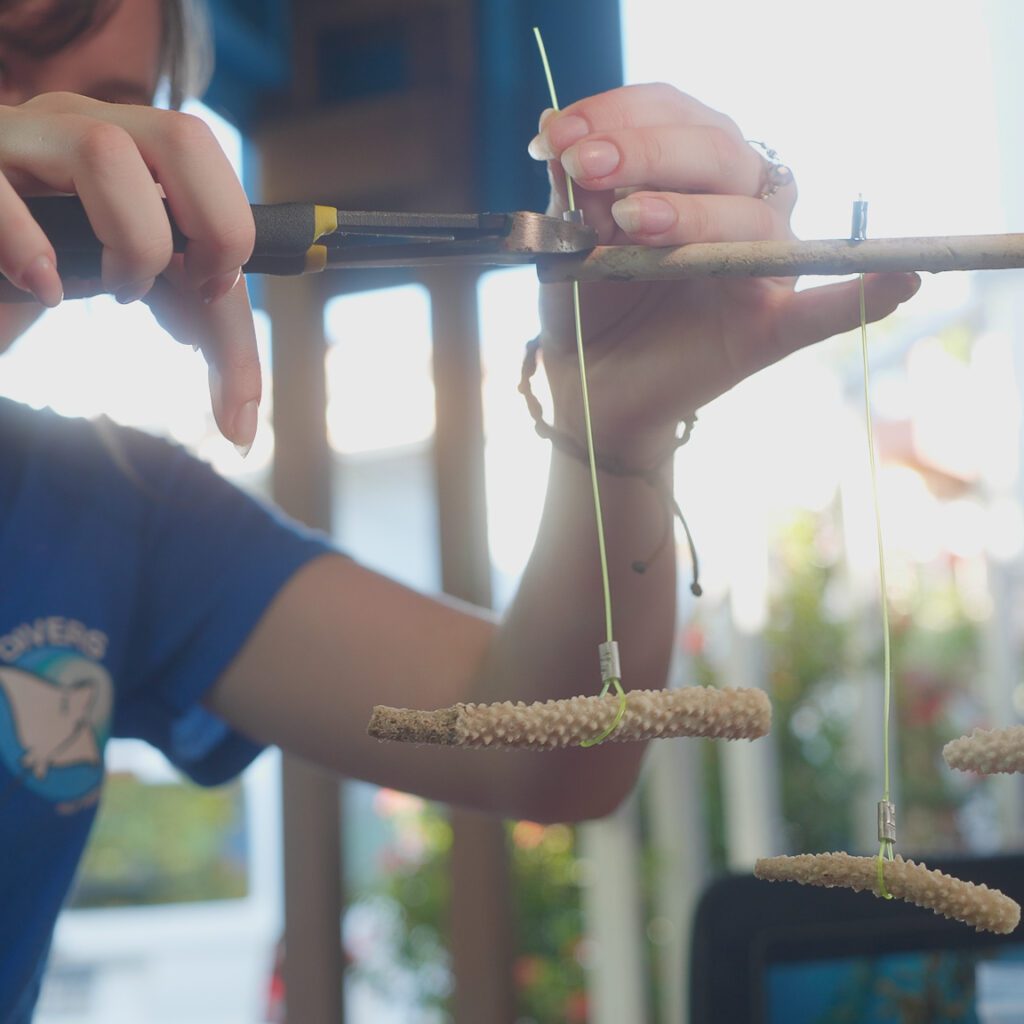
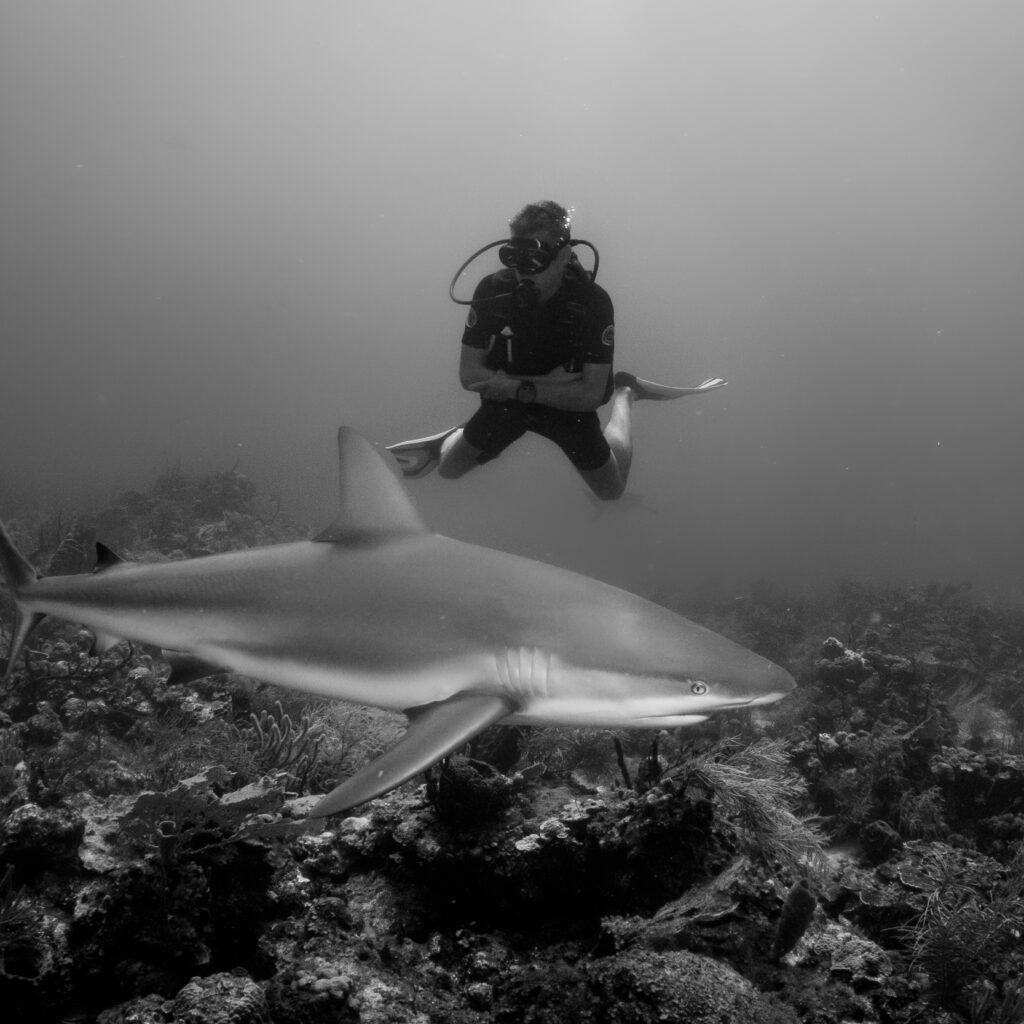
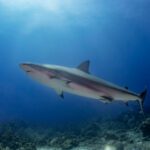
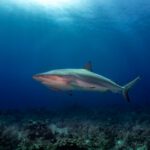
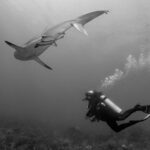
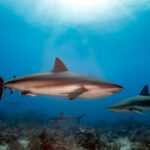
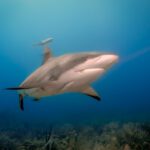
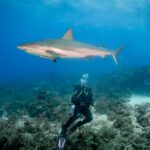
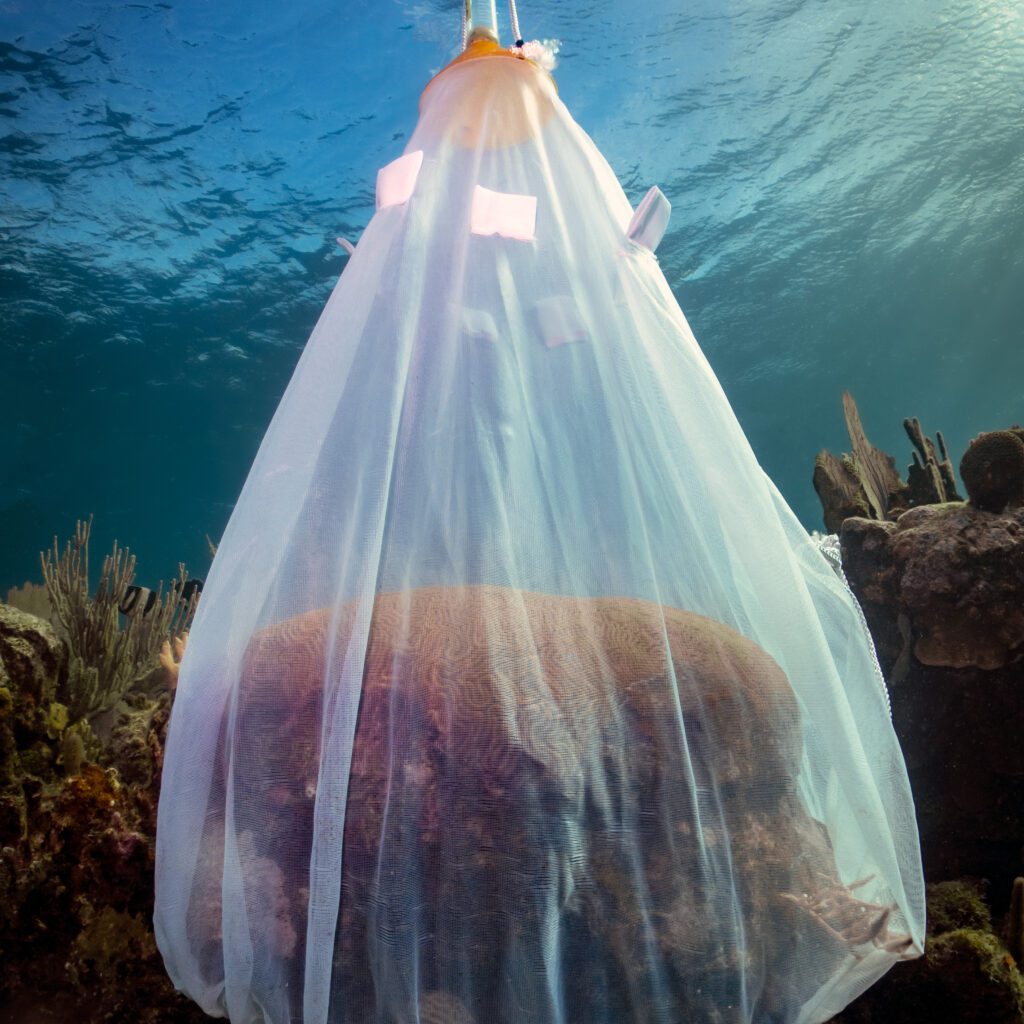
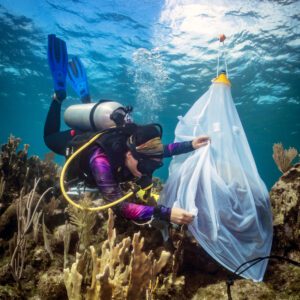
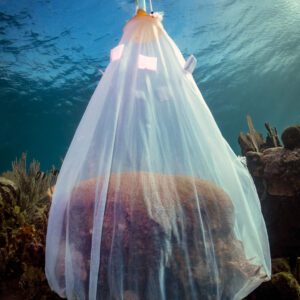
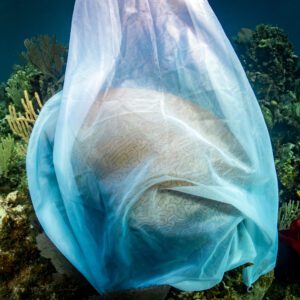
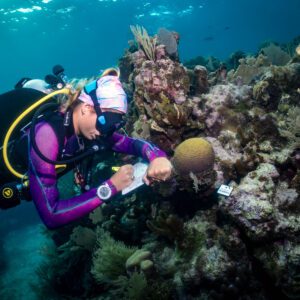
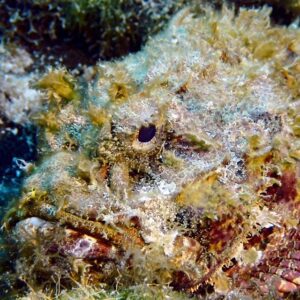
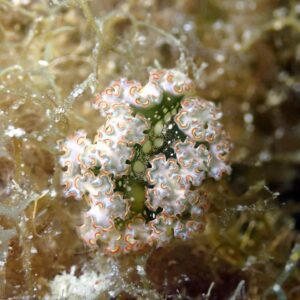
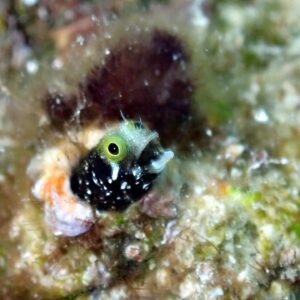
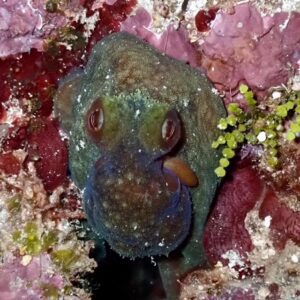
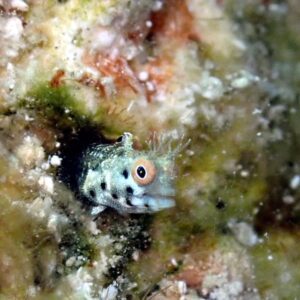
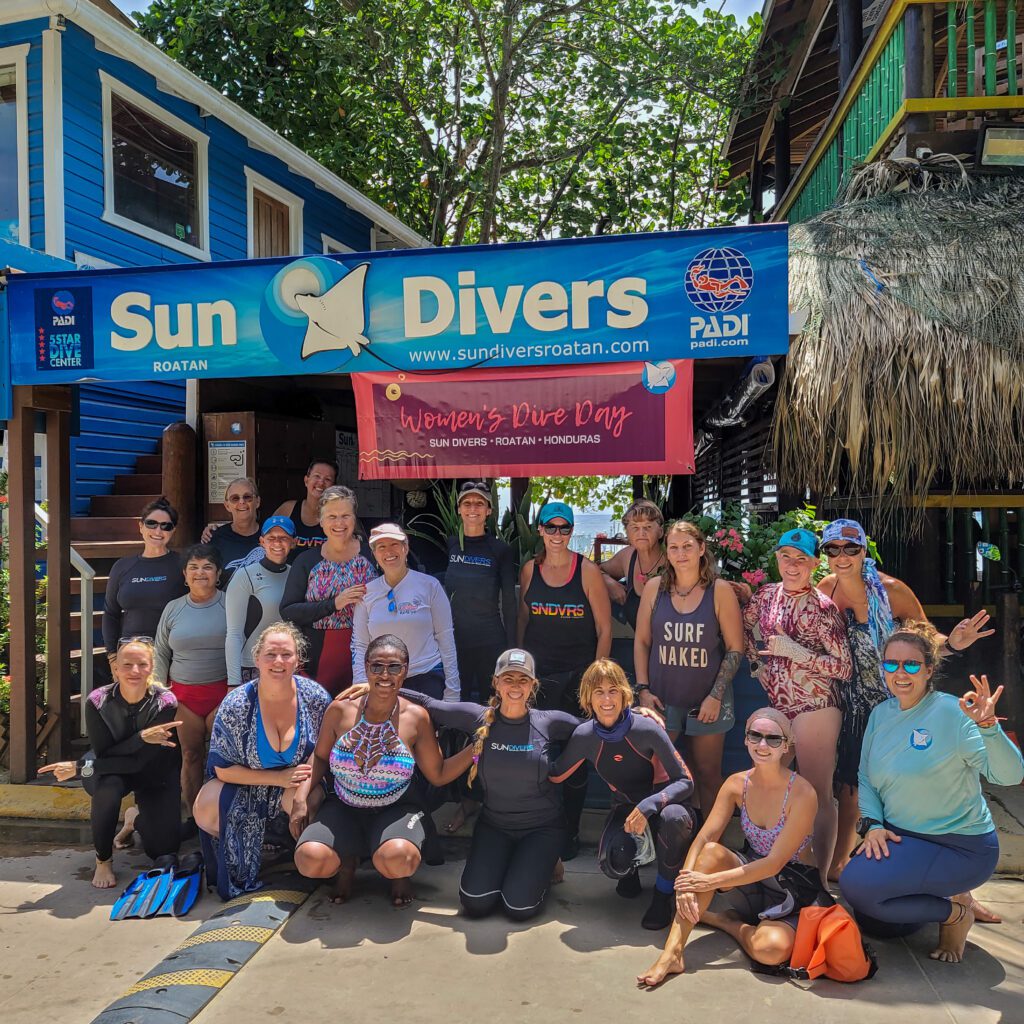
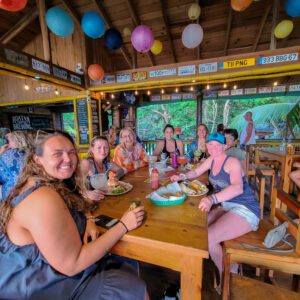
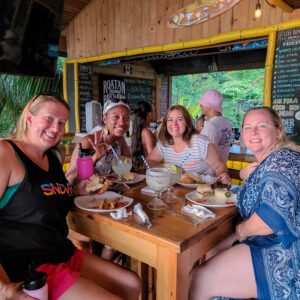

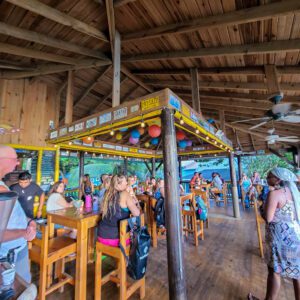
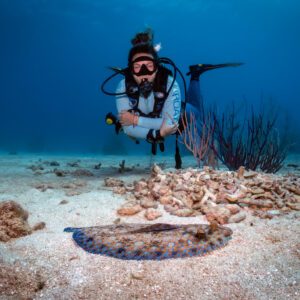
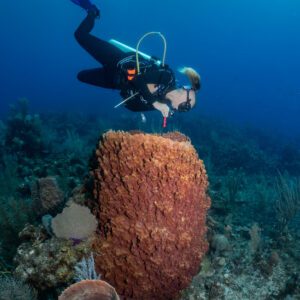
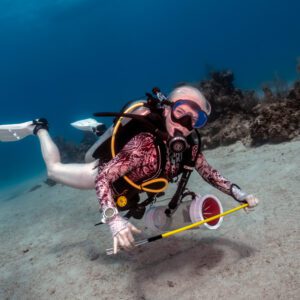
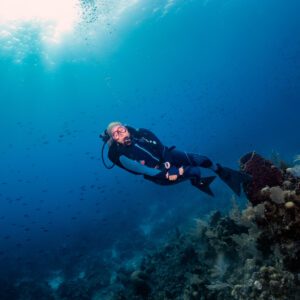
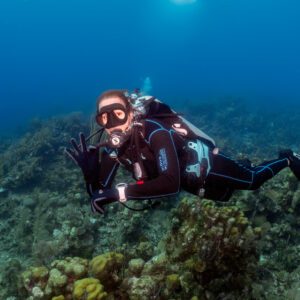
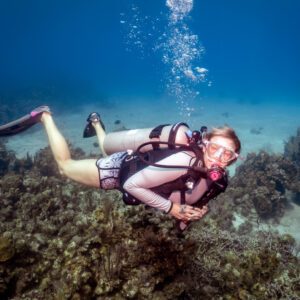
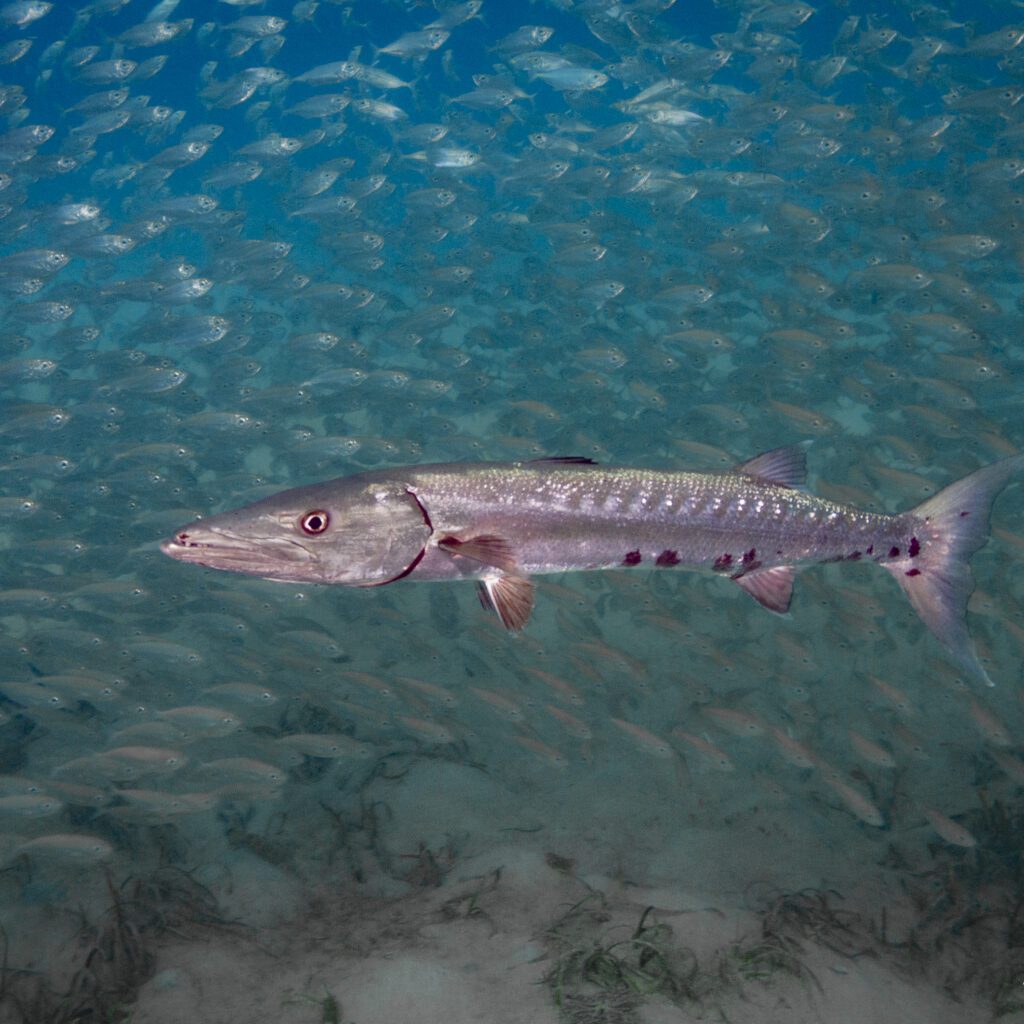
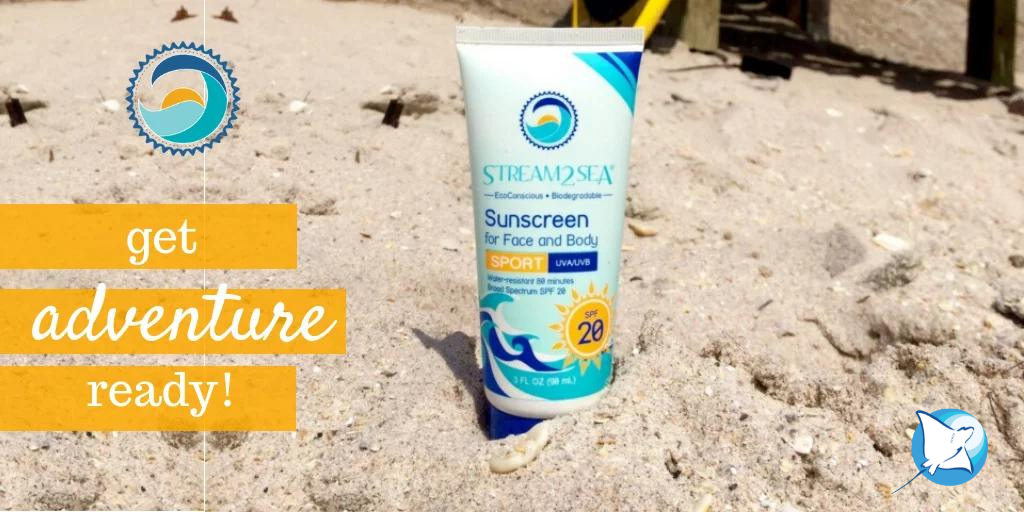
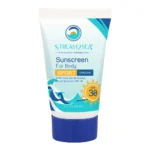
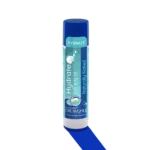
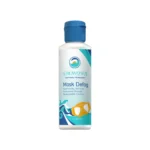
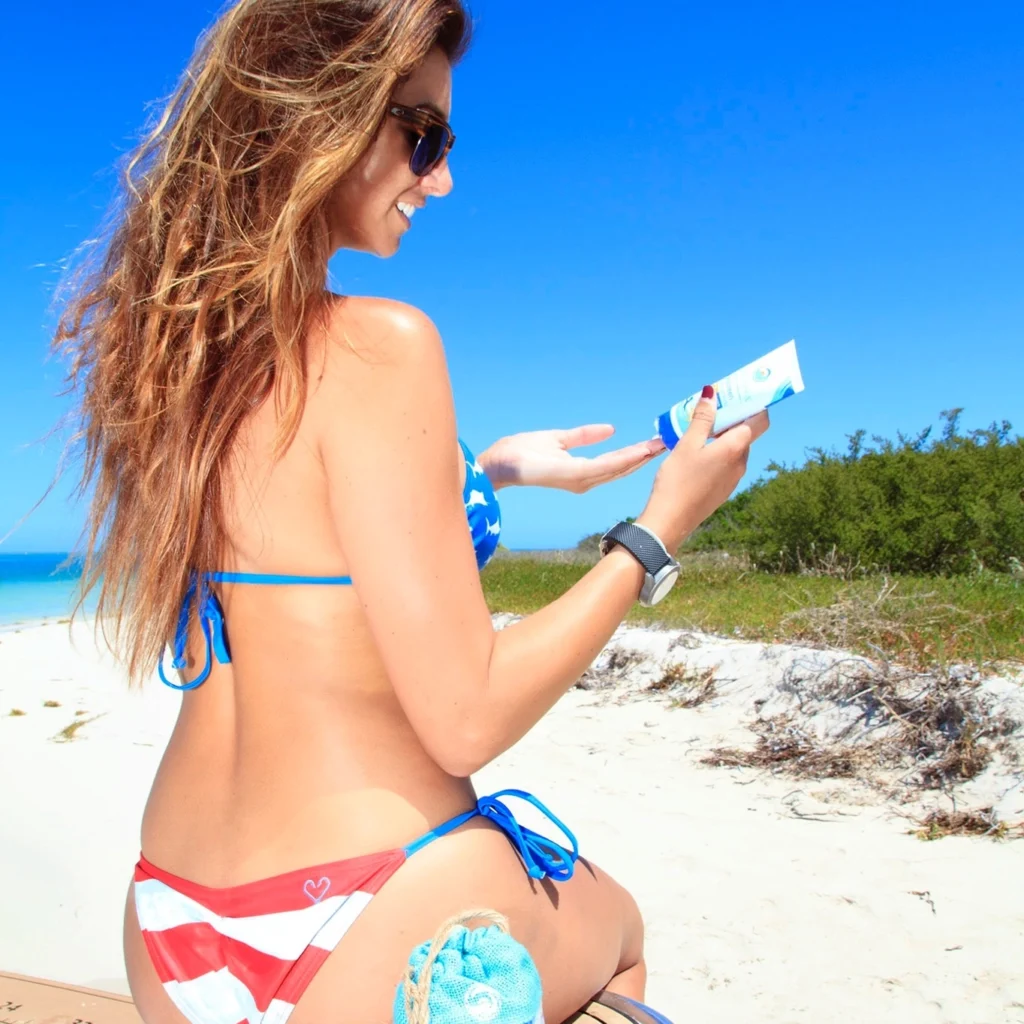
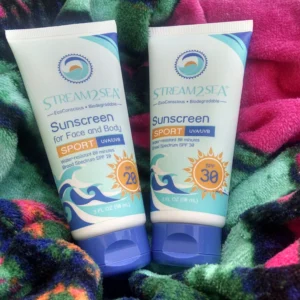 that you can be good at business while also doing good, by prioritizing purpose as much as profits.
that you can be good at business while also doing good, by prioritizing purpose as much as profits.